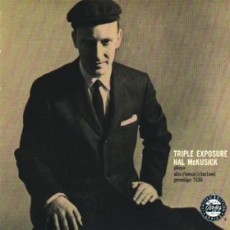
Daily Dose Of Jazz…
Hal McKusick was born on June 1, 1924 in Medford, Massachusetts. Hal moved with his family at age 3 to nearby Newton and at age 8, Hal’s mother bought him a clarinet as a Christmas present, insisting first on a vow of daily practice sessions and weekly lessons. With clarinet in hand, Hal practiced relentlessly and took lessons from schoolteacher Frank Tanner, who used him in the school band on clarinet and alto saxophone at age 9. Sight-reading came quickly to Hal, and by age 15, he was playing Boston’s burlesque house, the Old Howard Theater.
By the 40s and WWII McKusick was playing with Les Brown and moved through the decade playing with Boyd Raeburn and then Claude Thornhill. In the early 1950s he worked with Terry Gibbs and Don Elliott and in 1957 released his first album as a leader for Prestige titled Triple Exposure. As a sideman he sat in on recording sessions with groups led by George Russell and Jimmy Giuffre; worked with Bill Evans, Art Farmer, Paul Chambers, Connie Kaye, Lee Konitz and John Coltrane.
During the 60s he joined the CBS orchestra playing alongside the likes of Hank and Thad Jones, playing Carnegie Hall and Lincoln Center behind Judy Garland, Sarah Vaughan, Peggy Lee, Nat King Cole and Barbara Streisand. In the 70s he moved east to New York and throughout the 70s and 80s he produced weekend performances at Jazz At Moon in Easthampton that led to forming his nonet featuring Clark Terry, Art Farmer, Percy Heath, Jim Hall, Mike LeDonne, Hank Jones, Jim McNeely Jerry Dodgion and others.
Hal McKusick, alto saxophonist, clarinetist, flautist, composer and educator taught at the Ross School in East Hampton, New York and also restored and sold antiques, restored and built Shaker furniture both for Bloomingdales and private commissions. On April 11, 2012 he passed away of natural causes at the age of 87.
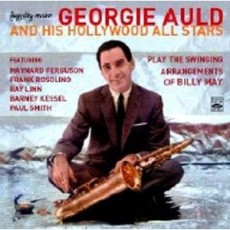
Daily Dose Of Jazz…
George Auld was born John Altwerger on May 19, 1919 in Toronto, Canada but lived in the U.S. from the late 1920s. He was most noteworthy for his tenor saxophone work Bunny Berigan, Artie Shaw, Benny Goodman, Erroll Garner, Dizzy Gillespie, Al Porcino, Billy Eckstine, Tiny Kahn, Frank Rosolino and many others.
Primarily a swing saxophonist, he did many big band stints in his career, and led several big bands, including Georgie Auld and His Orchestra and Georgie Auld and His Hollywood All Stars. Auld also played some rock´n roll working for Alan Freed in 1959.
George can be heard playing sax on the 1968 Ella Fitzgerald album “30 by Ella” and in 1977 he played a bandleader in “New York, New York” starring Liza Minelli and Robert DeNiro and also acted as a technical consultant for the film. The tenor saxophonist, clarinetist and bandleader George Auld died in Palm Springs, California at the age of 71 on January 8, 1990.
More Posts: bandleader,clarinet,saxophone
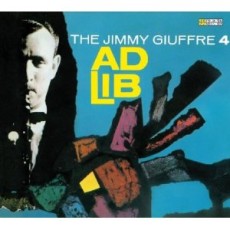
Daily Dose Of Jazz…
James Peter Giuffre was born on April 26, 1921 in Dallas, Texas. A graduate of Dallas Technical High School and North Texas Teachers College, he first became known as an arranger for Woody Herman. He would become a central figure in West Coast jazz and cool jazz, and was a member of Shorty Roger’s groups before going solo. Giuffre played clarinet, as well as tenor and baritone saxophones, but eventually focused on clarinet.
His first trio in 1957 consisted of Giuffre, guitarist Jim Hall and double bassist Ralph Pena, later replace by Jim Atlas. With minor hit with Giuffre’s “The Train and the River” featured on a television special The Sound of Jazz, he was matched with Pee Wee Russell for a leisurely jam session. When Atlas left the trio, Jimmy replaced him with valve trombonist Bob Brookmeyer. By 1961, Giuffre formed a new trio with Paul Bley and Steve Swallow and exploring free jazz hushed and quiet focus more resembling chamber music. The trio’s early ‘60s explorations of melody, harmony and rhythm are still as striking and radical as any in jazz.
Throughout the ‘60s Giuffre, Bley and Swallow eventually explored wholly improvised music, several years ahead of the free improvisation boom in Europe. By the early 1970s, Giuffre formed a new trio and utilized different instrumentation configurations as he ventured into electric and synthesizers. During this decade he headed the jazz ensemble at New York University, taught private lessons in saxophone and music composition. This continued through the ‘90s at the New England Conservatory of Music.
Jimmy Giuffre, who continually wrote creative and unusual arrangements and who was most notable for his development of forms of jazz which allowed for free interplay between the musicians, anticipating forms of free improvisation, passed away in Pittsfield, Massachusetts on April 24, 2008 of pneumonia, just two days shy of his 87th birthday.
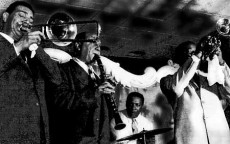
Daily Dose Of Jazz…
George Dorman “Scoops” Carry was born on January 23, 1915 in Chicago, Illinois. His mother a music teacher, his brother Ed a Chicago based bandleader and guitarist put Scoops in good company during his childhood. Starting on horn at the age of eight, he later went on to study at the Chicago College of Music and Iowa University.
He worked with Cassino Simpson, the Midnight Revellers and Boyd Atkin’s Firecrackers in the late 1920s and 30s while still a teenager. In 1931 Carry played with Lucky Millinder in RKO theater palaces. Reuniting with his brother in 1932, the pair co-led an orchestra through the middle of the 1930s. Following this, Scoops played with Zutty Singleton, Fletcher Henderson and Roy Eldridge. By 1938 he was with Art Tatum, a year later with Horace Henderson and at the end of the decade he worked briefly with Darnell Howard before joining Earl Hines’s band in 1940.
Carry remained in Hines’s employ until 1946, working with him in both large and small ensemble settings. After his tenure with Hines, Carry left music and entered law school in 1947, eventually working in the office of the Illinois state attorney.
Scoops Carry, alto saxophonist and clarinetist during the swing era, passed away on August 4, 1970.
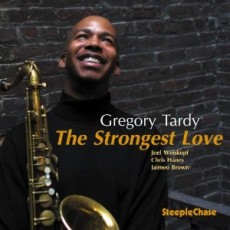
Daily Dose Of Jazz…
Gregory Tardy was born February 3, 1966 in New Orleans, Louisiana but was reared in Milwaukee, Wisconsin. His interest in music began studying classical clarinet. By high school he excelled in music, winning many awards and scholarships, studying with renowned clarinetists and preparing for a symphony career. Over time he was asked to play saxophone, filling missing gaps in various high school and college ensembles. But it was the prodding of his older brother that made him explore the music of John Coltrane, and decide to follow a jazz path.
Gregory’s passion for the saxophone took over his studies, he moved to St. Louis, played the jazz and blues scene, returned to New Orleans to further study, gigged with the Neville Brothers and ended up in bands led by Nicholas Payton, Jason and Ellis Marsalis. In 1992, Tardy recorded his first solo project “Crazy Love”, was picked up by Elvin Jones Jazz Machine, and moved to New York City.
His performance and recording lists a large array of prominence not limited to Tom Harrell, Dave Douglas, Wynton Marsalis, Jay McShann, Steve Coleman, Betty Carter, James Moody, Ravi Coltrane, Mark Turner, Dewey Redman, Chris Potter, Joe Lovano, Bill Frisell, Rashied Ali and John Patitucci. He has even brought his clarinet out of retirement playing with Andrew Hill, Steve Swallow, Stefan Harris and others.
Tardy continues to explore new territory while keeping in the tradition as he play his own music and perform in many great bands. As an educator he teaches private lessons and facilitates clinics around the world, but always speaking through his horn.


